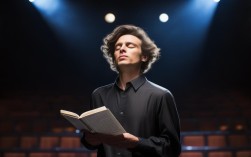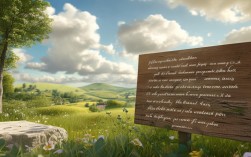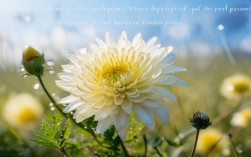Of course. Here is a guide to appreciating English poetry, written entirely in English. It is structured to be a comprehensive yet accessible introduction, covering key elements, historical periods, and a step-by-step method for analysis.

A Guide to Appreciating English Poetry
Poetry is one of the most condensed and powerful forms of human expression. To appreciate it is to learn a new language—a language of images, sound, and rhythm. This guide will walk you through the essential elements, historical movements, and a practical method for diving deep into a poem.
Part 1: The Building Blocks of Poetry
Before analyzing a poem, it's helpful to understand its core components. Think of these as the poet's toolbox.
Imagery
Imagery is language that appeals to the five senses—sight, sound, smell, taste, and touch. It creates vivid mental pictures and evokes emotions.
- Visual Imagery: "The yellow fog that rubs its back upon the window-panes" (T.S. Eliot)
- Auditory Imagery (Sound): "the buzz saw snarled and rattled in the yard" (Robert Frost)
- Olfactory Imagery (Smell): "the smell of stale beer and dirty women" (from The Love Song of J. Alfred Prufrock)
Figurative Language
This is language that goes beyond the literal meaning to create effect.
- Simile: A comparison using "like" or "as."
- Example: "My love is like a red, red rose." (Robert Burns)
- Metaphor: A direct comparison stating one thing is another.
- Example: "All the world's a stage, and all the men and women merely players." (William Shakespeare)
- Personification: Giving human qualities to non-human things.
- Example: "The sea that bares her bosom to the moon." (Percy Bysshe Shelley)
- Symbolism: An object, person, or place that represents a larger, more abstract idea.
- Example: A dove symbolizing peace; a road symbolizing a life choice.
Tone
Tone is the poet's attitude toward the subject or the reader. It's the emotional coloring of the poem. Is the tone nostalgic, ironic, solemn, joyful, melancholic, or critical?
- Example: In Edgar Allan Poe's "The Raven," the tone is one of melancholy, despair, and haunting mystery.
Mood
Mood is the atmosphere or feeling the poem creates in the reader. While tone is the poet's attitude, mood is the reader's emotional response. A poem can have a somber tone but create a mood of peaceful reflection.
Sound Devices
Poetry is meant to be heard. Sound devices are crucial to its musicality.
- Alliteration: The repetition of initial consonant sounds.
- Example: "The fair breeze blew, the white foam flew." (Samuel Taylor Coleridge)
- Assonance: The repetition of vowel sounds within words.
- Example: "The room fell soon." (repetition of the "oo" sound)
- Consonance: The repetition of consonant sounds, especially at the end of words.
- Example: "This blessed speed" (repetition of the "s" and "t" sounds)
- Onomatopoeia: Words that imitate the sound they describe.
- Example: "The buzz saw snarled and rattled..." (Robert Frost)
Rhythm and Meter
Rhythm is the pattern of stressed and unstressed syllables that creates a poem's beat. The systematic arrangement of this beat is called meter.
- Foot: The basic unit of meter, containing a specific pattern of stressed ( / ) and unstressed ( x ) syllables.
- Iamb (x /): The most common foot in English. (e.g., a-BOVE, toDAY)
- Trochee ( / x): (e.g., YESter, LOVely)
- Anapest (x x /): (e.g., understand, forget me not)
- Dactyl ( / x x): (e.g., HAPpy, MERri-ly)
- Meter: The number of feet in a line.
- Iambic Pentameter: Five iambic feet per line. This is the most common meter in English poetry, used by Shakespeare and Milton. It sounds natural and conversational.
- x / x / x / x / x /
- "Shall I comPARE thee TO a SUMmer’s DAY?"
- Trochaic Tetrameter: Four trochaic feet per line. It often has a more dramatic or song-like quality.
- / x / x / x / x
- "The FORest WHISper SOFT and LOW"
- Iambic Pentameter: Five iambic feet per line. This is the most common meter in English poetry, used by Shakespeare and Milton. It sounds natural and conversational.
Form
Form is the structure of the poem.
- Stanza: A group of lines, similar to a paragraph in prose.
- Rhyme Scheme: The pattern of end rhymes, usually marked with letters (ABAB, AABB, etc.).
- Fixed Forms: Poems with a strict, traditional structure.
- Sonnet: A 14-line poem, traditionally in iambic pentameter. Shakespearean sonnets have an ABAB CDCD EFEF GG rhyme scheme.
- Villanelle: A 19-line poem with two repeating rhymes and two refrains.
- Haiku: A Japanese form of three unrhymed lines with a 5-7-5 syllable structure, often capturing a moment in nature.
- Free Verse: Poetry without a regular meter or rhyme scheme. It relies on other elements like imagery, repetition, and line breaks for its effect.
Part 2: A Brief Journey Through English Poetry
Understanding the historical context can enrich your appreciation.
- The Renaissance (16th-17th Century): A rebirth of classical learning and humanism. Focus on beauty, love, and the complexity of the human spirit.
- Key Poets: William Shakespeare (Sonnets), John Donne (Metaphysical poetry).
- The Romantic Era (Late 18th-19th Century): A reaction against industrialization. Emphasized emotion, nature, the individual, and the sublime.
- Key Poets: William Wordsworth, Samuel Taylor Coleridge, Percy Bysshe Shelley, John Keats.
- The Victorian Era (19th Century): Characterized by social change, doubt, and a conflict between faith and science. Poetry was often narrative and moral.
- Key Poets: Alfred, Lord Tennyson, Robert Browning, Emily Dickinson (though American, her style is often grouped here).
- Modernism (Early 20th Century): A radical break from tradition. Characterized by experimentation, fragmentation, disillusionment after WWI, and a focus on the inner consciousness.
- Key Poets: T.S. Eliot, W.B. Yeats, Ezra Pound.
- Contemporary Poetry (Mid-20th Century - Present): Diverse and global. Free verse is common. Themes include identity, politics, and everyday life.
- Key Poets: Sylvia Plath, Seamus Heaney, Carol Ann Duffy.
Part 3: A Step-by-Step Method for Analysis
Use this process to dissect any poem.
Step 1: The First Impression (Read Aloud!)
- Read the poem through once without stopping. Don't worry about understanding every word.
- What is your initial gut reaction? What is the overall mood?
- Read it aloud again. Listen to the music of the words. Notice the rhythm, rhyme, and sound devices.
Step 2: Decipher the Surface Meaning (Paraphrase)
- Go through the poem line by line or stanza by stanza.
- Put the poem into your own words. What is literally happening? Who is the speaker? Who is the audience? What is the setting?
- Look up any unfamiliar words or allusions. This is crucial for understanding the poem's context.
Step 3: Analyze the Elements (Dig Deeper)
- Now, use the "Building Blocks" from Part 1. Ask specific questions:
- Imagery: What images stand out? How do they contribute to the mood?
- Figurative Language: Are there any metaphors, similes, or symbols? What do they reveal?
- Sound & Rhythm: How does the use of alliteration, assonance, or meter affect the poem's meaning











